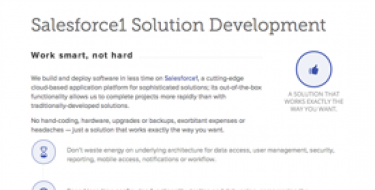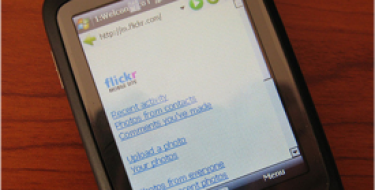Ecotourism Begins in the Marketing Department
Ecotourism, green travel, limited-footprint vacationing—call it what you like, more and more travelers are taking into account the environmental effects of their vacation choices. Even the RV world is beginning to get a little green. Promoting your venue or destination to environmentally aware consumers can bring rewards.
With earth-friendly concerns on the rise, we can't help but wonder why the focus in ecotourism seems squarely on the destination or activity. There are a lot of steps in between, beginning with how destinations or attractions market to potential visitors. What's being done on that level in the name of sustainability?
Not enough, we tend to think. Granted, we have a bit of history with visitor packets, but let's face it: traditional marketing techniques—in this case, printed information packets and rack cards—are often wasteful and, perhaps, blunt a given organization's claims to promote environmental stewardship. Yes, we recognize there have been advances in recycled printing materials and sustainable processes; however, we want to focus on how shifting some marketing resources to online techniques can help burnish an organization's eco-friendly credentials—as well as increase ROI.
Use less paper, more PDF
Just don't make the mistake of taking the same brochure PDF you send to your printers and slapping it on your website; as we've mentioned before, online and offline reading habits are different. Instead, design an information packet for the sole purpose of online display—while reducing the number you have printed and mailed. In addition to sparing a small forest and bolstering your eco-cred, there are other benefits:
- Efficiency. You can design and post quickly. Changes also can be made quickly and with little (or no) cost. More importantly, visitors to your website will have information immediately available to them, at all times.
- Measurability. Direct mail response rates are often low and notoriously hard to identify. However, if you capture contact information from those downloading your online packet, you may see better metrics on your efforts.
- Savings. Printing and mailing costs money; in some cases, making a PDF online costs only time. Moreover, it won't cost you an arm and a leg when you inevitably misspell "cryptosporidium" for the fifth time.
In an age when people demand immediate satisfaction, it's hard to expect consumers to wait weeks for a brochure. It's even harder to show environmental sensibility when said brochure reeks of the benzene used in the glossy coating.
Make your website an equal attraction
Posting pretty pictures on a website is easy. What's challenging is using pictures and descriptive copy to create a concise, yet compelling, narrative that intrigues a potential customer who's weary from seeing the same blue waters and room descriptions on every site. Your website isn't a digital postcard; it's an opportunity for your markets to experience a piece of your destination, even when miles away.
What does this have to do with environmental stewardship? For starters, if you make your site compelling and effective, interested customers won't have a need to request that printed packet we already talked about. Better yet, you'll be able to explain the significance of your LEED certification and educate users about its role in sustainable practices.
Email more than reservation confirmations
Want to run seasonal promotions or highlight your eco-friendly spa? Stick with email. It costs pennies compared to direct mail and, like PDF information packets, has multiple benefits. It also won't leave a single golden-cheeked warbler homeless.
Go the extra mile in showing your environmental commitment, and your customers will show their appreciation. You might also just save a penny or two.
MONTHLY MARKETING INSIGHTS.
Get thought-provoking and actionable insights to improve how your firm makes a connection with your customers.





LEAVE A COMMENT
Good article, I could not agree more on so many points as many businesses pretend themselves going green whereas they are still not implementing common sense measures. Do you have some examples of successful businesses???
Unfortunately, much of the tourism industry still clings to traditional—and, in many cases, wasteful—marketing practices. It's hard to give up those glossy brochures and rack cards. The recent economic upheaval, however, may have interesting side effects that reduce some of the green washing.
As is custom, many organizations are cutting back on traditional marketing efforts. Interestingly, many are actually redirecting resources toward online efforts. Thus, the environment may be the unintended beneficiary of the slowdown. What remains to be seen is if these organizations will simply go back to old habits once things pick up.